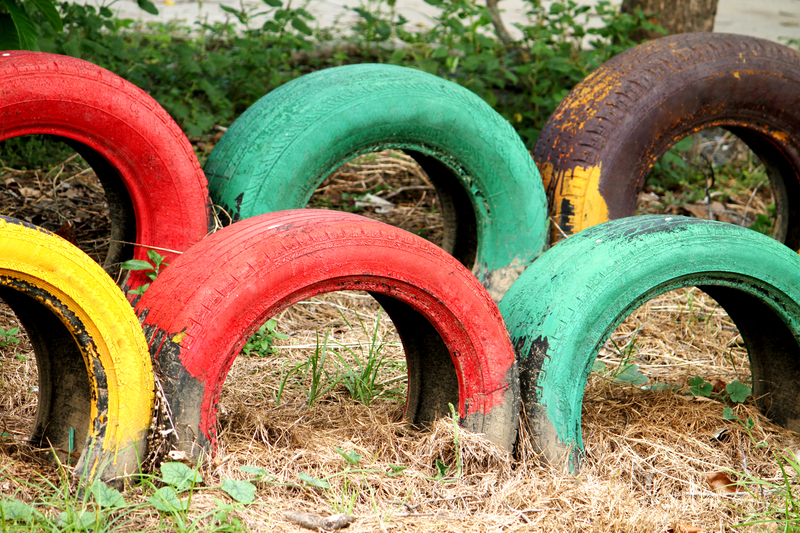Letting Go of Old Pots and Pans the Responsible Way: A Comprehensive Guide
In every kitchen, old pots and pans accumulate over the years, taking up valuable space and often raising the question: What is the best way to part with worn-out cookware? Disposing of cookware the responsible way is not just about decluttering; it's about making choices that are environmentally friendly and aligned with sustainability goals. In this detailed guide, we'll explore a variety of eco-friendly methods to let go of old cookware, from recycling and donation, to upcycling and creative reuse.

Why Responsible Disposal of Cookware Matters
It's easy to throw a battered nonstick pan or a warped pot into the trash, but many conventional disposal methods can be harmful to the environment. With the increasing concern about environmental impact, learning how to throw away pots and pans responsibly is essential for every eco-conscious home cook. Here are a few reasons why:
- Landfill Waste: Old cookware takes decades to break down, contributing to landfill pile-up.
- Toxic Materials: Some pots and pans contain coatings or metals that can leach toxins into the soil.
- Resource Conservation: Recycling helps conserve the raw materials and energy needed to create new products.
- Supporting Community: Donating usable items can benefit individuals and families in need.
The Environmental Impact of Discarded Cookware
Most pots and pans are made from metals like aluminum, stainless steel, or cast iron--materials that do not decompose readily. Additionally, nonstick coatings may contain chemicals such as PTFE or PFOA, which can be harmful if not disposed of properly. Letting go of used pots and pans in the right way minimizes negative environmental effects and helps promote a circular economy.
How to Assess Whether Cookware Should Be Tossed or Saved
Before deciding how to part ways with your old cookware, assess its condition. Some marks, stains, or scratches are superficial, while damage like chipped nonstick surfaces, rust, or deep warping may make pieces unsafe to use.
- Safety First: If the nonstick coating is flaking, or if there is severe rust, it's time to say goodbye.
- Repurposing Potential: Aesthetically damaged but structurally sound pots and pans may enjoy a second life elsewhere.
- Donation Grade: Only donate items that are clean, functional, and free from health hazards.
Smart and Responsible Ways to Let Go of Old Cookware
1. Recycling Metal Pots and Pans
Recycling is often the ideal solution for disposing of old cookware, particularly those made of metal. Follow these steps for recycling pots and pans:
- Check with Your Local Recycling Program: Some municipal curbside programs accept scrap metal, while others require you to bring it to a recycling facility.
- Separate Materials: Remove any non-metal parts (like plastic or wooden handles, glass lids) if possible, as these can sometimes contaminate metal recycling streams.
- Group by Metal Type: Aluminum, stainless steel, or cast iron should be recycled separately when possible to aid processing.
- Ask About Nonstick Coatings: Some centers can process Teflon-coated pans; others may not. Always check beforehand.
Pro Tip: If your local recycling program does not accept cookware, search for a scrap metal dealer or facility in your area. Some retailers, like certain big-box home stores, occasionally run recycling drives for cookware.
2. Donating Usable Pots and Pans
If your cookware is still in usable condition, donation is a fantastic way to let go of old pots and pans responsibly and support those in need.
- Check Local Charities: Organizations like Goodwill, Salvation Army, or local shelters may accept gently used cookware.
- Community Groups: Online platforms like Freecycle, Buy Nothing, or local Facebook group marketplaces are great places to rehome your items.
- Schools and Community Kitchens: Some schools, soup kitchens, or community centers welcome cookware donations for their meal programs.
What Not to Donate
Avoid donating any items that are unsafe, such as nonstick pans with peeling coatings, pots with deep rust, or any piece with broken handles. Always clean cookware thoroughly before handing it over--hygiene and safety come first.
3. Creative Upcycling and Repurposing of Old Cookware
If recycling or donating aren't feasible, consider the creative reuse of old pots and pans. Upcycling is one of the trendiest ways to give dated kitchenware a new lease on life, reducing waste and adding quirky, functional art to your home.
- Planters: Drill holes in the bottom and turn old saucepans into potted plants or herb gardens.
- Garden Tools: Cast iron pans make excellent rustic birdbaths, tool holders, or stepping stones when set in the earth.
- Decor and Storage: Vintage cookware can be transformed into decorative pieces, wall art, or unique organizers for craft supplies.
- Candle Holders and Fire Pits: Small pots are perfect for DIY candles; larger metal pans can function as mini fire pits for outdoor spaces.
Being creative with repurposing your old cookware can be a fun family project while ensuring you're disposing of pots and pans in a meaningful, responsible way.
4. Manufacturer Take-Back Programs
Many cookware manufacturers are jumping on the green bandwagon with take-back or recycling programs. Some famous brands will accept their own products back for proper disposal or recycling, and occasionally offer discounts for customers who participate in these initiatives.
- Check the manufacturer's website for a take-back or recycling program.
- Follow their instructions for shipping or dropping off old cookware.
- Some companies, such as Tefal or Calphalon, provide incentives for recycling cookware through them.
Participating in these programs helps ensure that your old pots and pans are processed with best environmental practices.
5. Special Collection and Drop-Off Events
Many communities organize annual or seasonal household waste collection events. At these events, residents can bring items not usually accepted in regular curbside recycling, including old cookware, small appliances, and scrap metal.
- Contact your local solid waste department or city website for upcoming dates and accepted items.
- Ask if nonstick-coated pans or pans with mixed materials will be accepted, as rules can vary.
What Not to Do When Disposing of Cookware
To practice responsible letting go of old pots and pans, avoid these pitfalls:
- Don't Place Cookware in Regular Recycling Bins: Unless specifically allowed, most municipal programs do not process cookware curbside.
- Don't Burn or Incinerate: Burning nonstick pans or those with plastic/wooden handles releases toxins and pollutants.
- Don't Dump Illegally: Never leave cookware on roadsides or in unauthorized places; illegal dumping is damaging and can incur fines.
Tips for Extending the Life Cycle of Your Pots and Pans
While the focus is on letting go of old cookware responsibly, it's equally important to care for the pots and pans you keep so they last longer and delay the disposal process altogether.
- Use Proper Utensils: Avoid metal tools on nonstick surfaces to prevent scratches.
- Handwash When Possible: Gently hand washing extends the life of even dishwasher-safe cookware.
- Store Safely: Stack cookware with cushions or pan protectors to prevent dents and warping.
- Season Cast Iron: Regularly oil and season cast iron pans to prevent rust and build nonstick qualities naturally.
The Bottom Line: Mindful Choices for a Greener Kitchen
Letting go of old pots and pans the responsible way is good for both your home and the planet. With thoughtful disposal--be it recycling, donation, upcycling, or participating in take-back programs--you contribute to resource conservation, community support, and a cleaner environment.
Before discarding that battered saucepan or warped frying pan, consider all your options. Responsible cookware disposal is a vital step towards a more sustainable and eco-friendly lifestyle. Your small efforts can add up to significant positive impacts when multiplied by millions of homes worldwide!

FAQs: Responsible Pot and Pan Disposal
-
Can I recycle pans with plastic handles?
In most cases, you'll need to remove plastic, rubber, or wood handles first--these are rarely recyclable with metal. Use a screwdriver to detach handles before recycling the metal body. -
Where can I recycle nonstick cookware?
Check with your city's recycling or waste management facility. Some accept nonstick pans, while others do not. Manufacturer take-back programs are another solution. -
Is it safe to use pots and pans with scratches or worn surfaces?
Superficial scratches are usually fine on stainless steel or cast iron, but peeling or flaking nonstick coatings can release chemicals into your food. Never use cookware with damaged nonstick surfaces. -
Are there stores that offer recycling programs for old cookware?
Yes, some retailers periodically offer recycling promotions for kitchenware, especially during Earth Month. Contact your local big-box or specialty kitchenware stores for details.
Conclusion: Take the Responsible Step Today
Whether you're recycling, donating, upcycling, or engaging in manufacturer programs, parting with old pots and pans doesn't have to burden the landfill. Responsible cookware disposal ensures that your kitchen upgrades contribute to a cleaner environment and a more compassionate community. Next time you find yourself clearing out your cabinets, remember: a greener kitchen starts with thoughtful, responsible choices!
Find your local options, spread the word, and inspire others in your community to join in environmentally responsible practices--because every pan counts!
